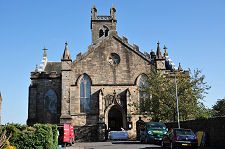During last weeks input we had an introduction to energy and the importance of renewable energy. We learned about hydro electric power, solar power and wind power. We had a debate over the whether wind turbines are actually good for the environment. I found this to be very useful for making up my own opinion on wind energy as there were a lot of point that I had not considered before. however I think this type of activity could be quite difficult to do with children because they would get distracted and not stay on task when being told to research the information required.
In today’s input we learned about ways we could teach energy in a practical, hands-on way through various activities. In groups we carried out three different tasks; creating our own anemometer, a kite and a pinwheel. When carrying out these tasks we faced many challenges, such as the straws for the anemometer not being strong enough to stay straight and hold carry the cups, the cups not being durable and splitting when trying to pierce a hole in them, the binbag for kite being to flimsy to cut with scissors etc. These are all thing that you would have to test out before you presented the tasks to children to do themselves.
There were also many teaching implications that would have to be taken into consideration. Many of the tools we used today were sharp and could potentially be quite dangerous if used in the wrong way, therefore the children would have to be given a safety talk before being given the sharp scissors, hack saw, pins, stapler etc. The would also have to be supervised during the activities. It would also be important to allocate specific roles to children, such as a time keeper, a quality checker, a facilitator etc as when we carried out these tasks as a group ourselves there wasn’t always a job for everyone to do, or one person would take charge of everything.
Personally I feel that it is important that children have a good understanding of the importance of renewable energy, as we will soon run out of fossil fuels and must find alternative resources to overcome this issue. Children are the next generation that will be far more greatly affected by this than we will.




 (View of Beith from Kilbirnie)
(View of Beith from Kilbirnie)






